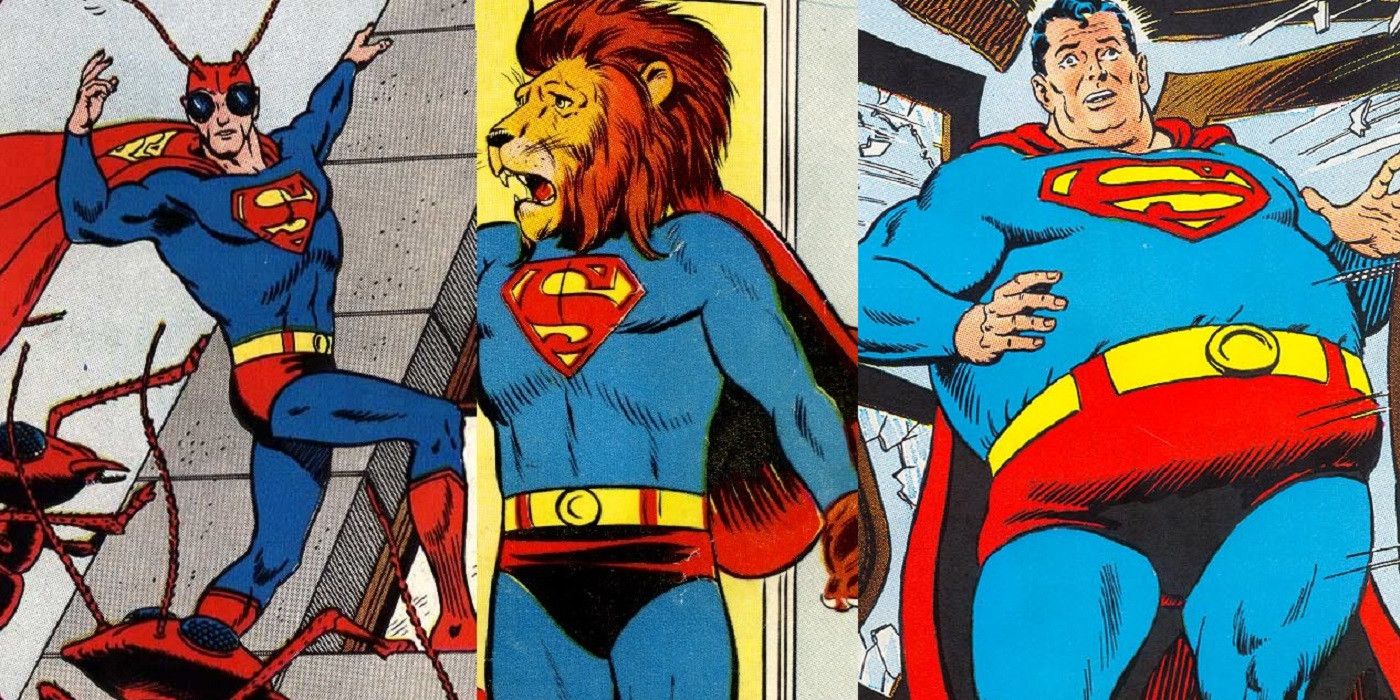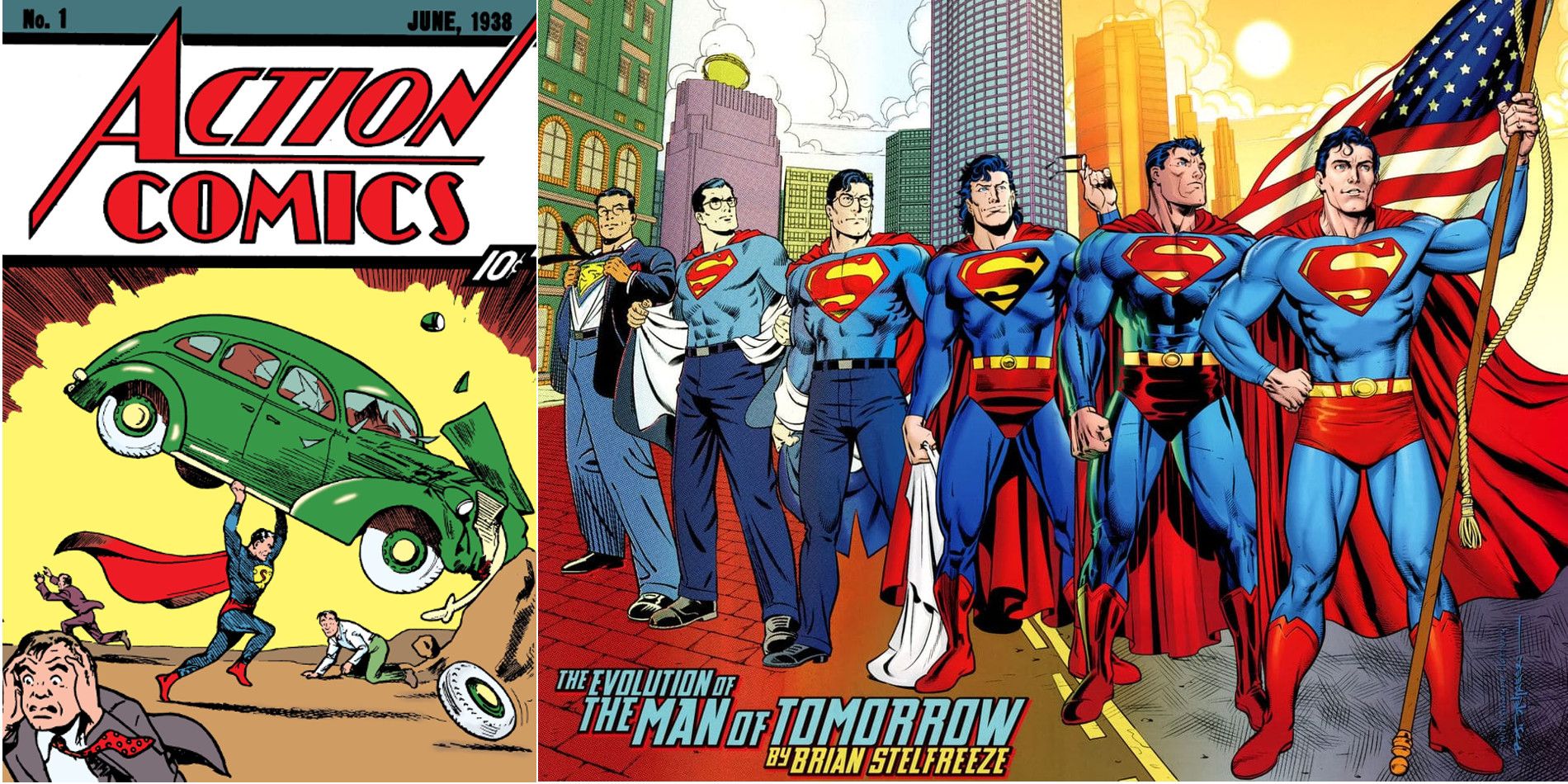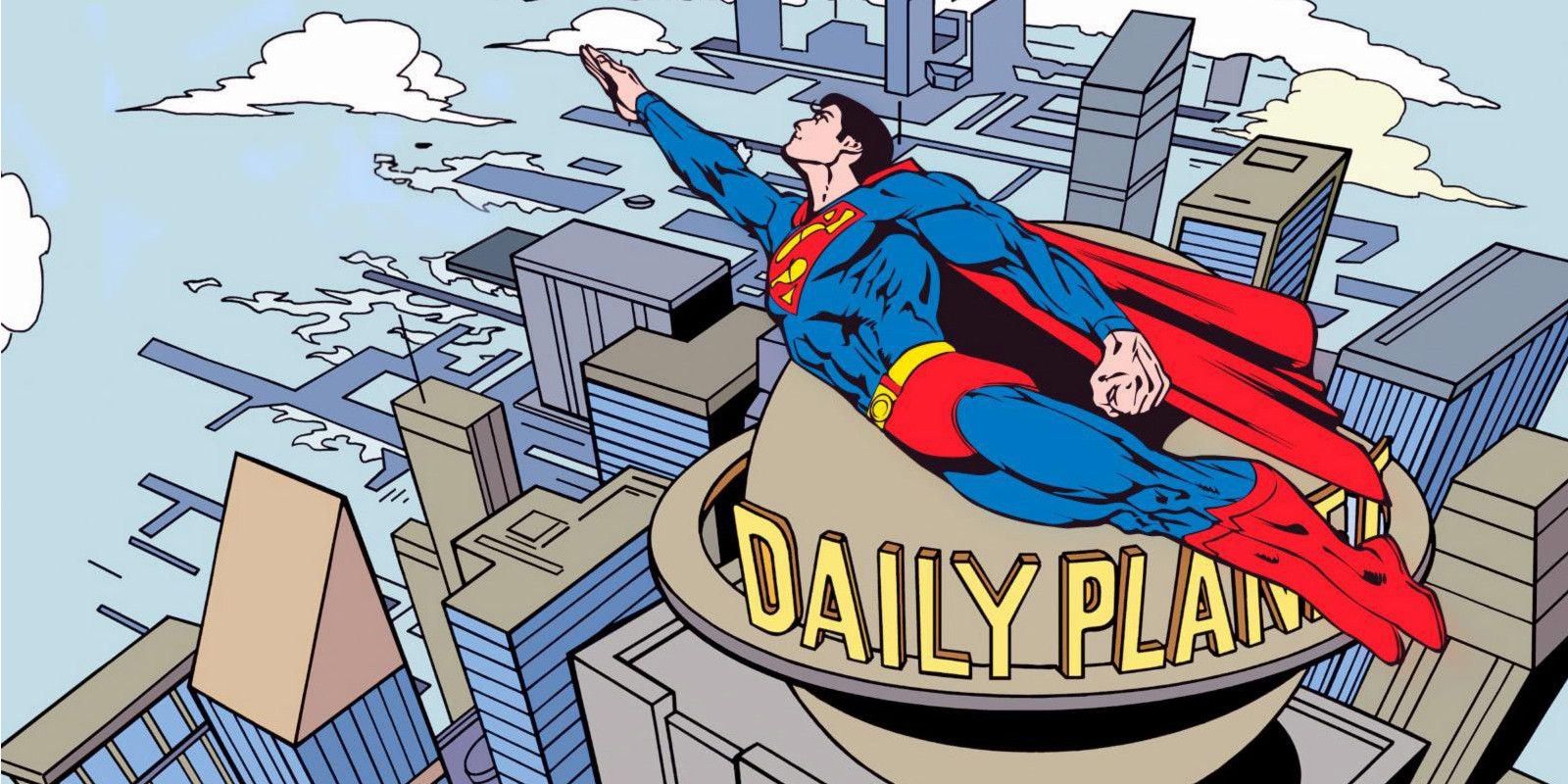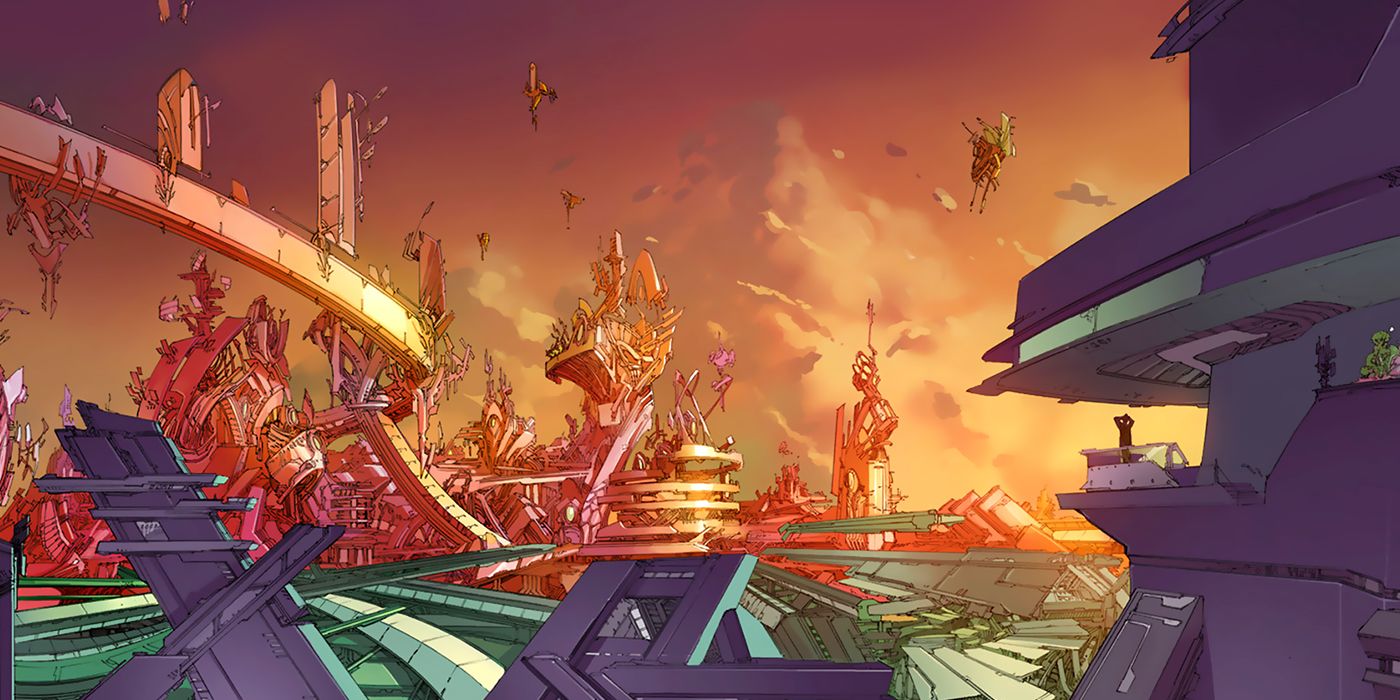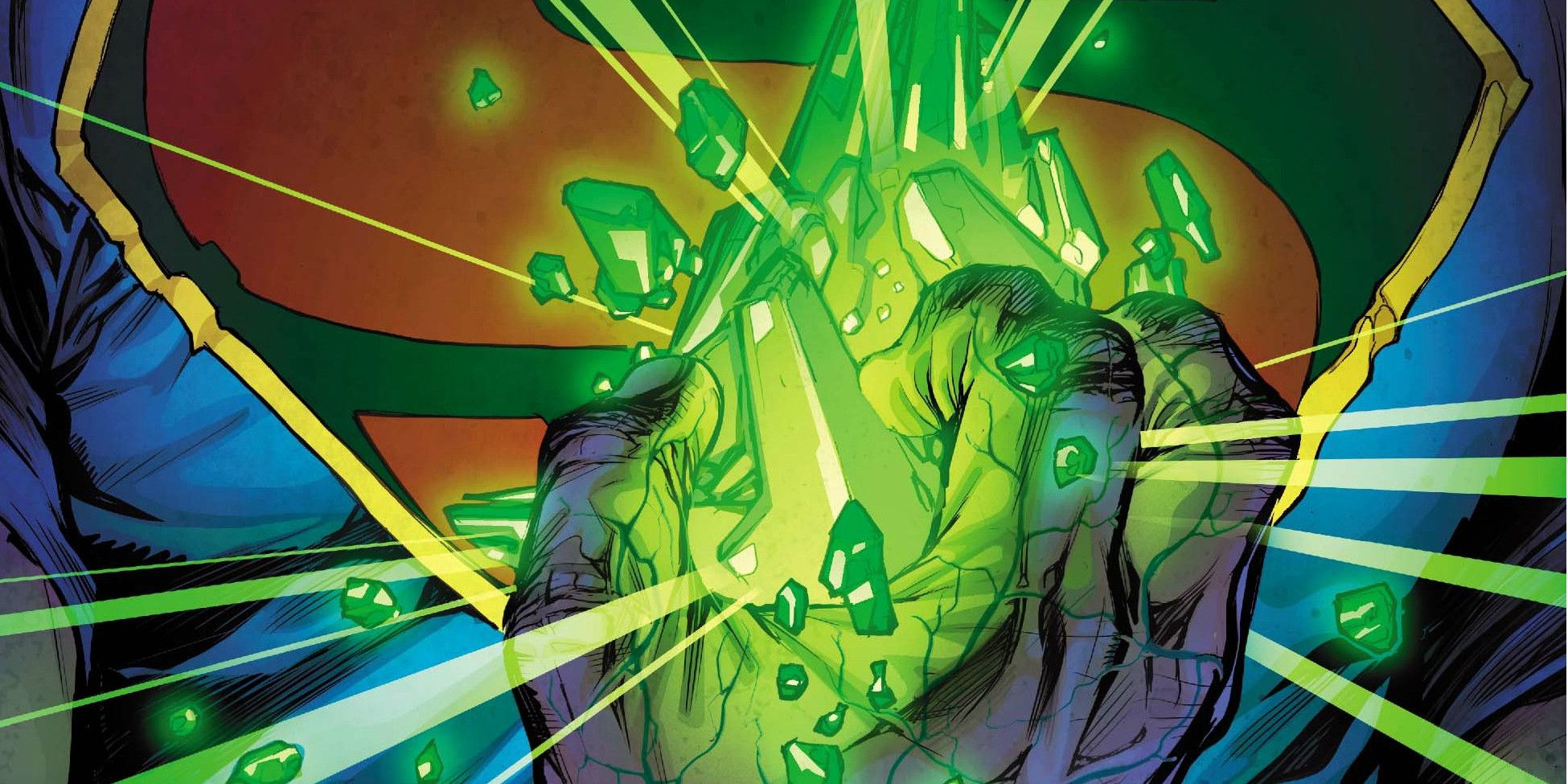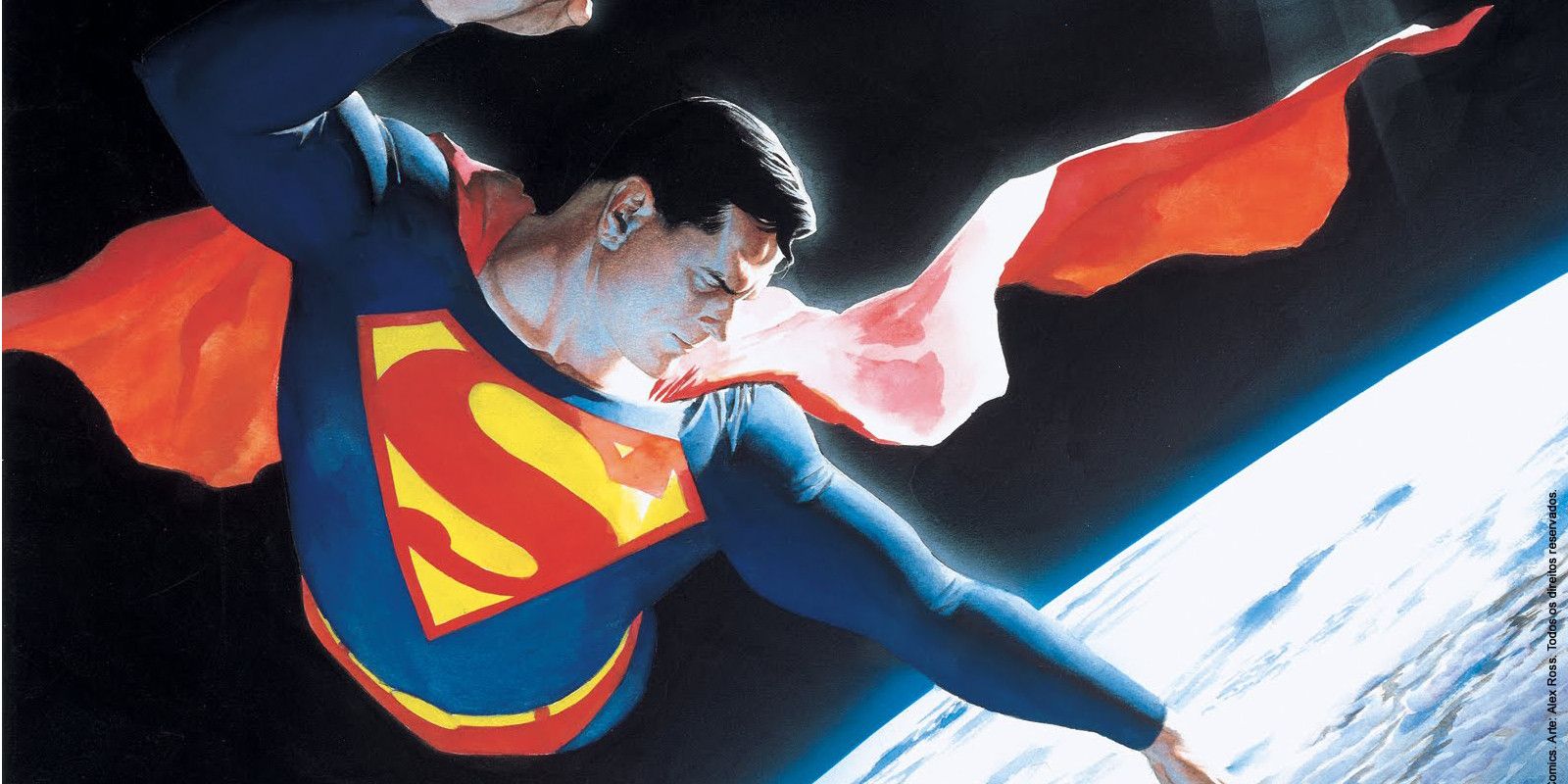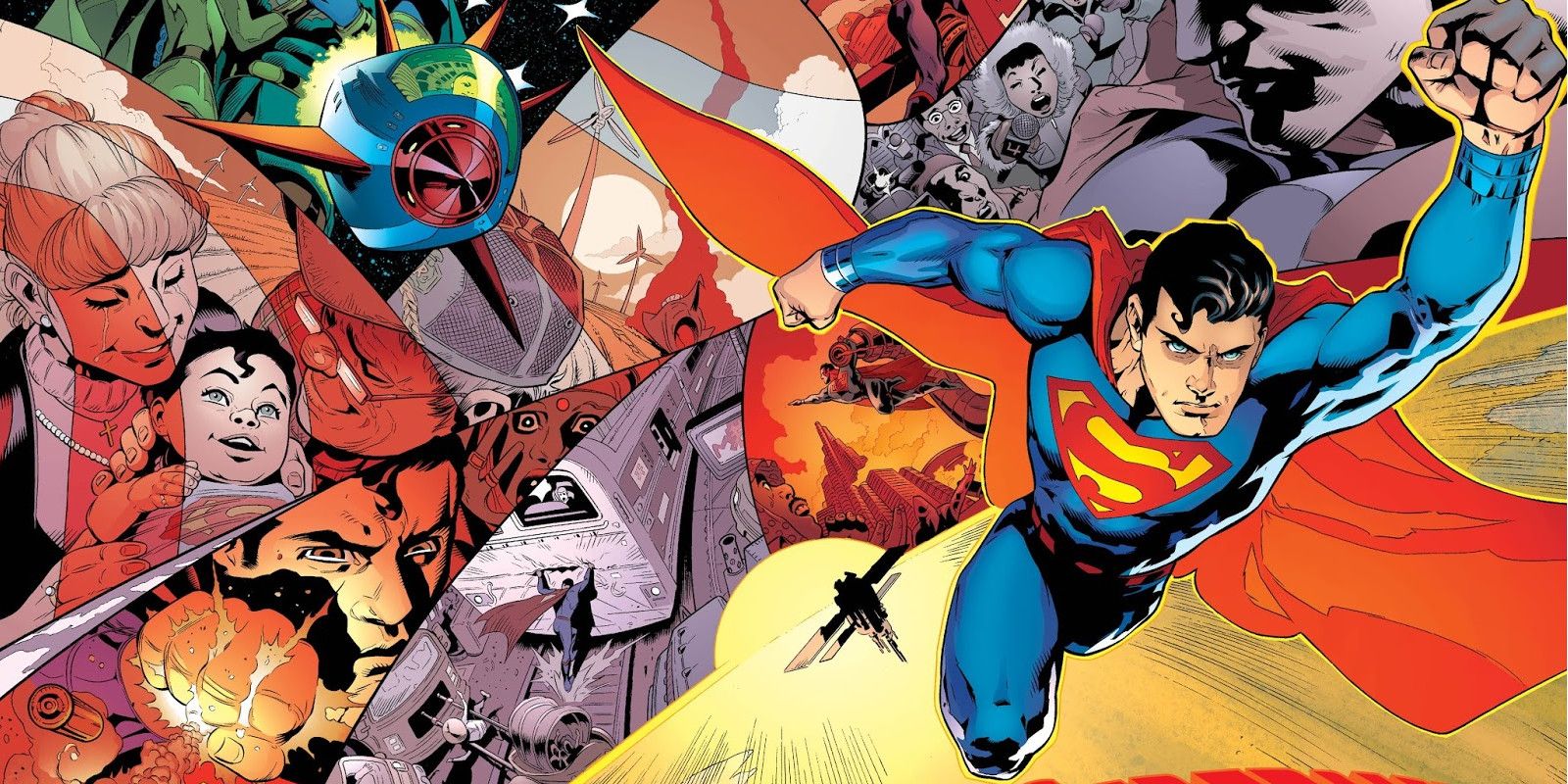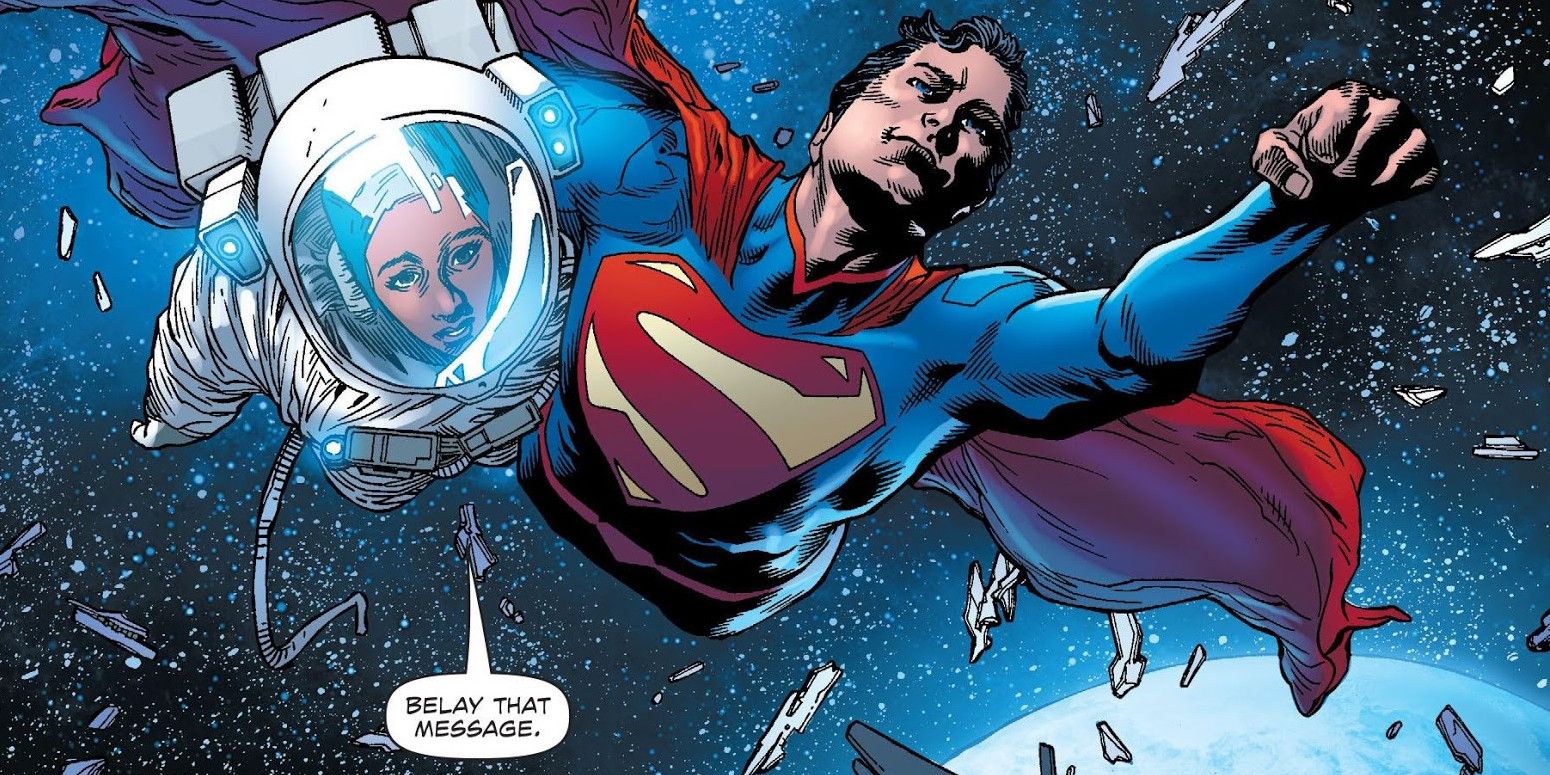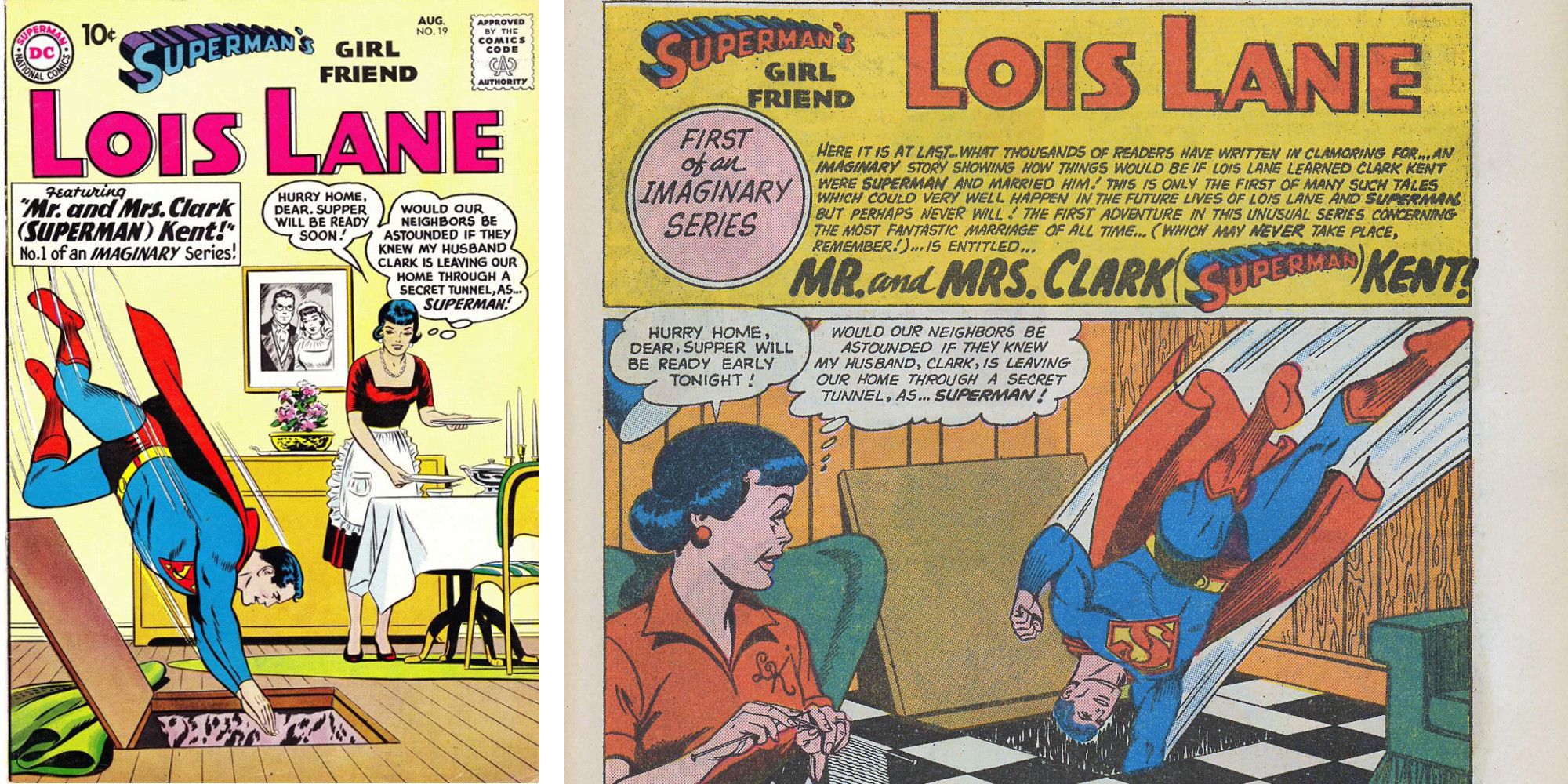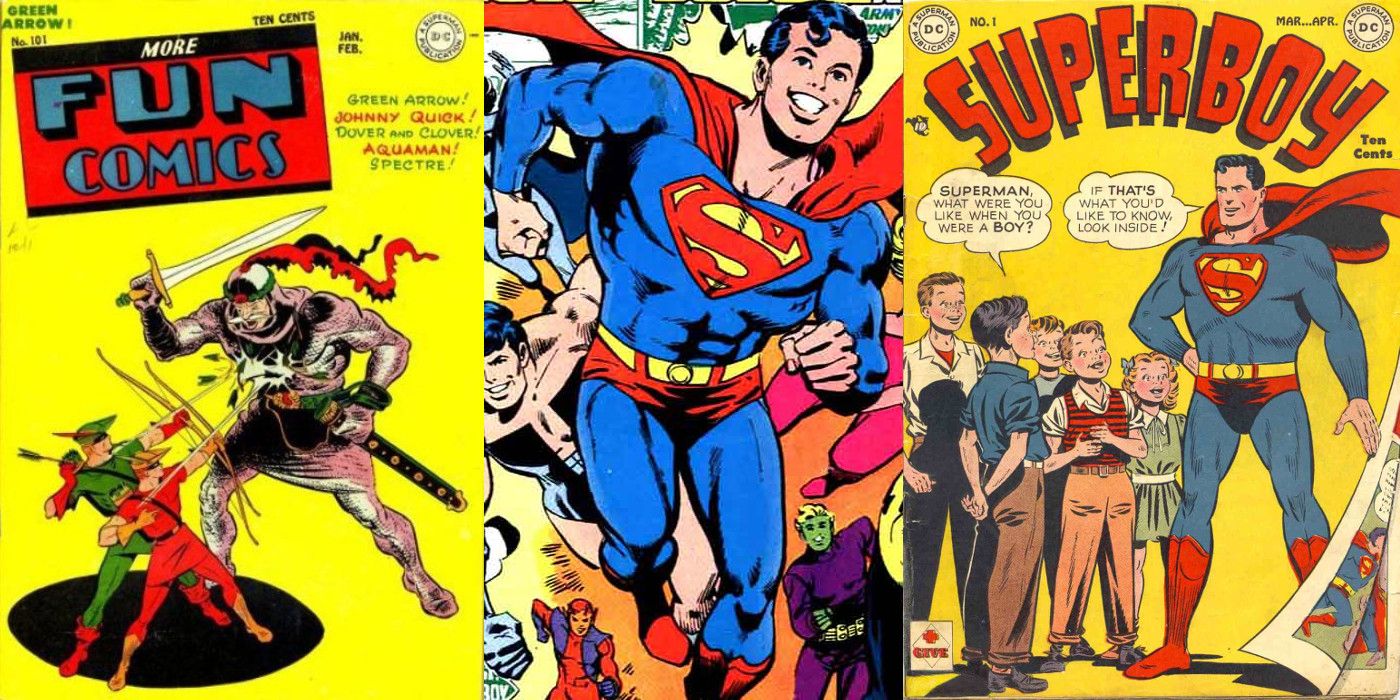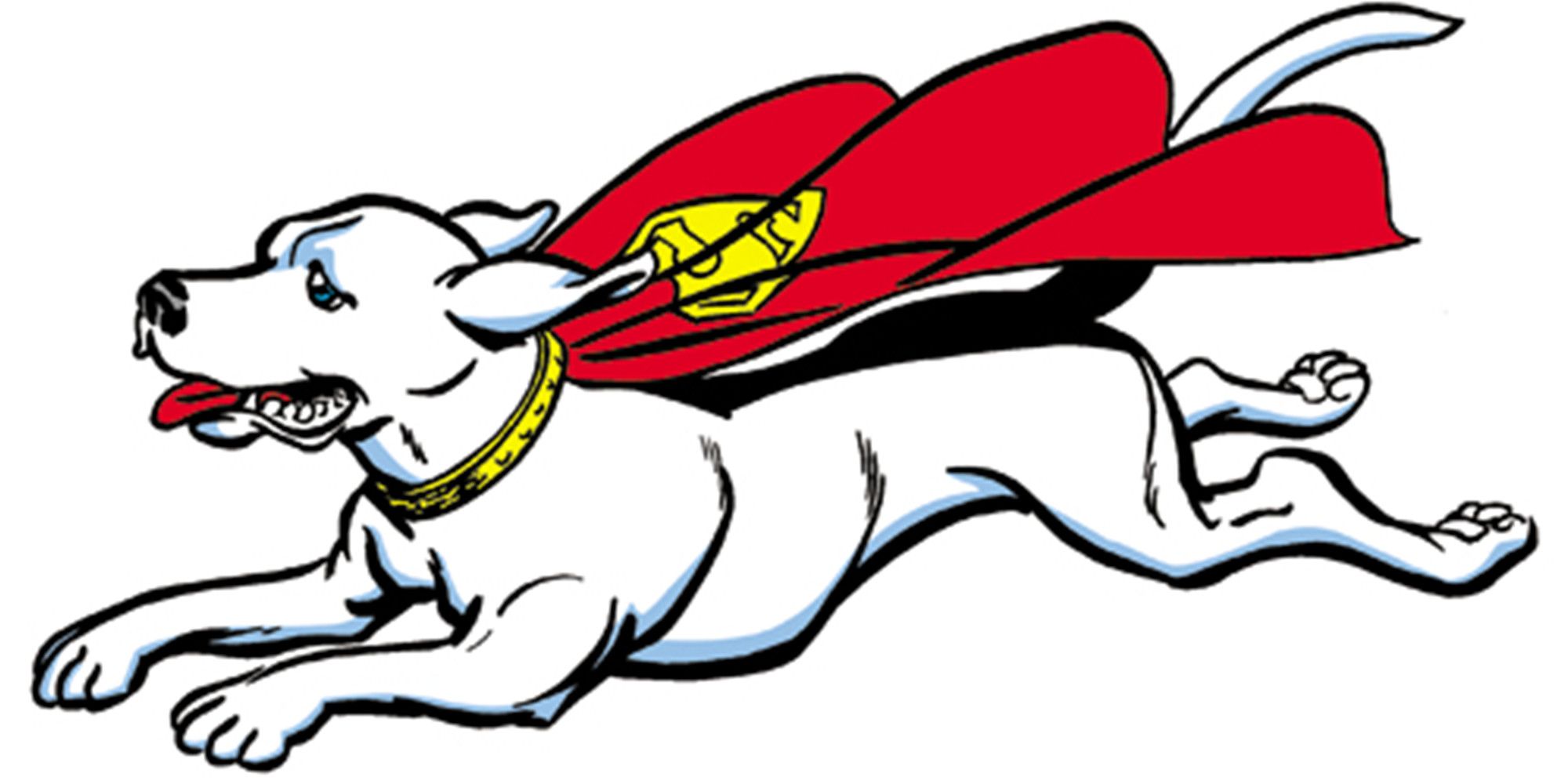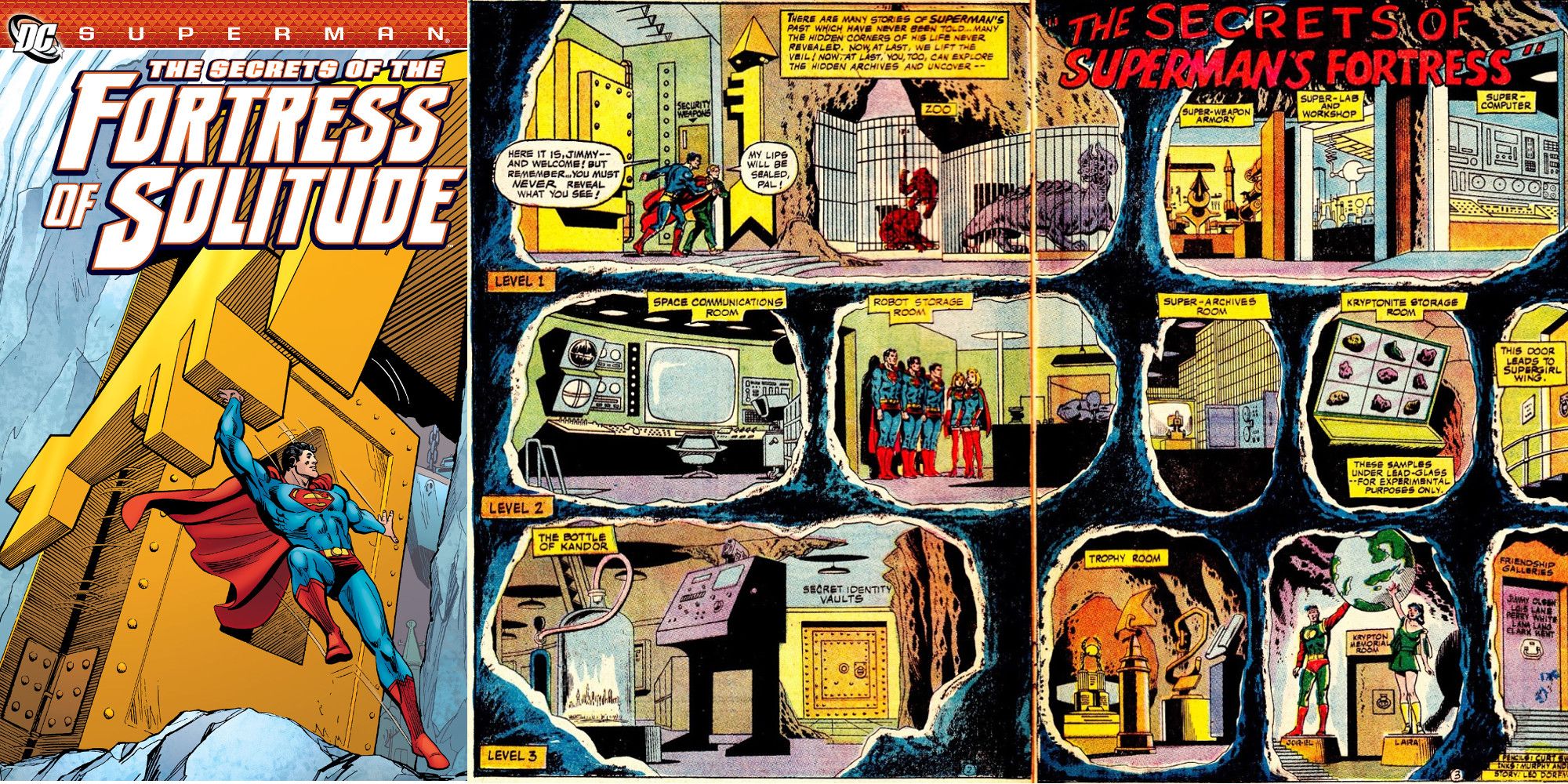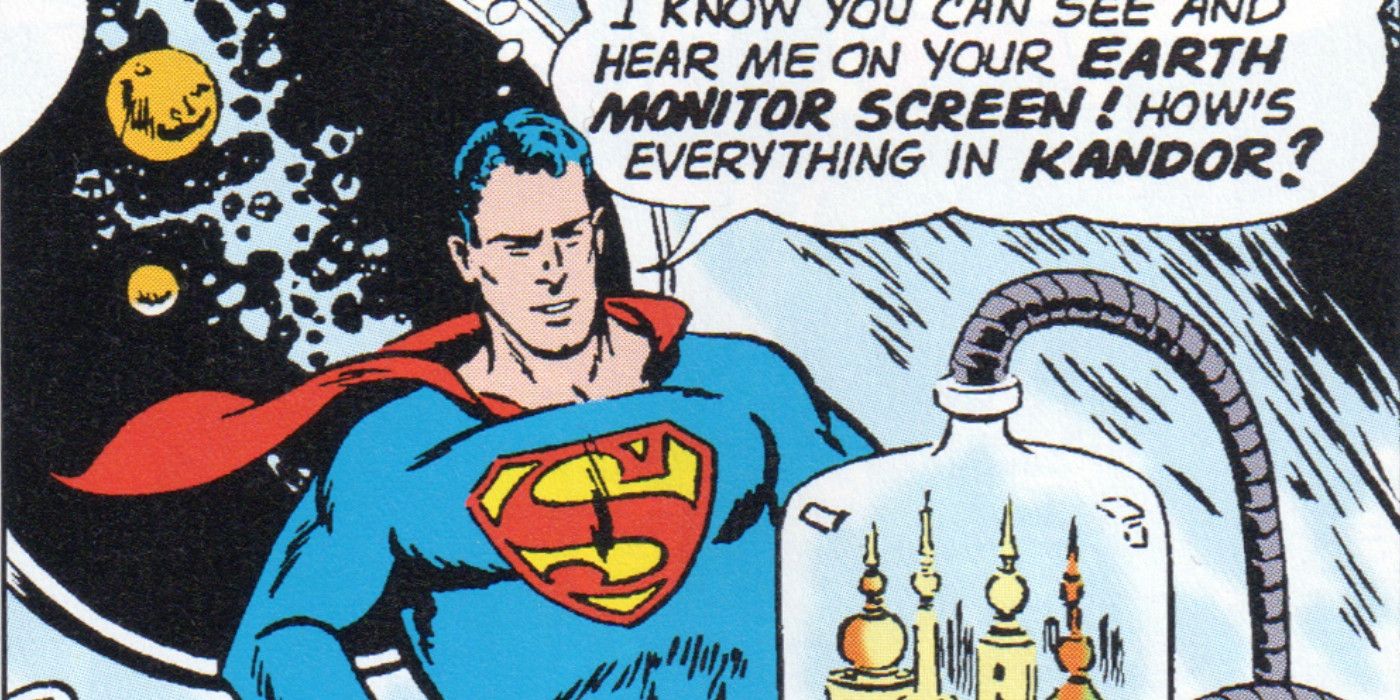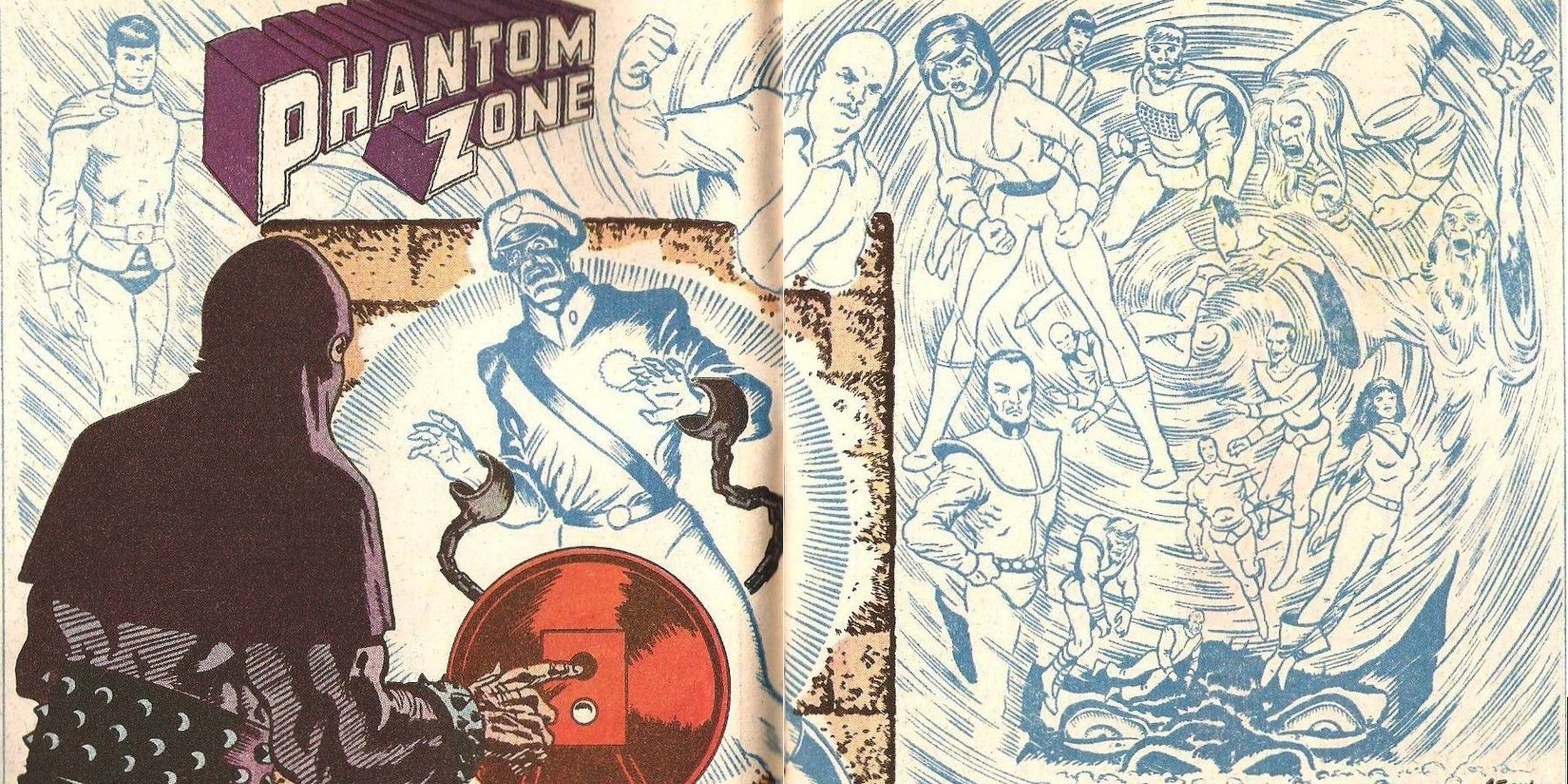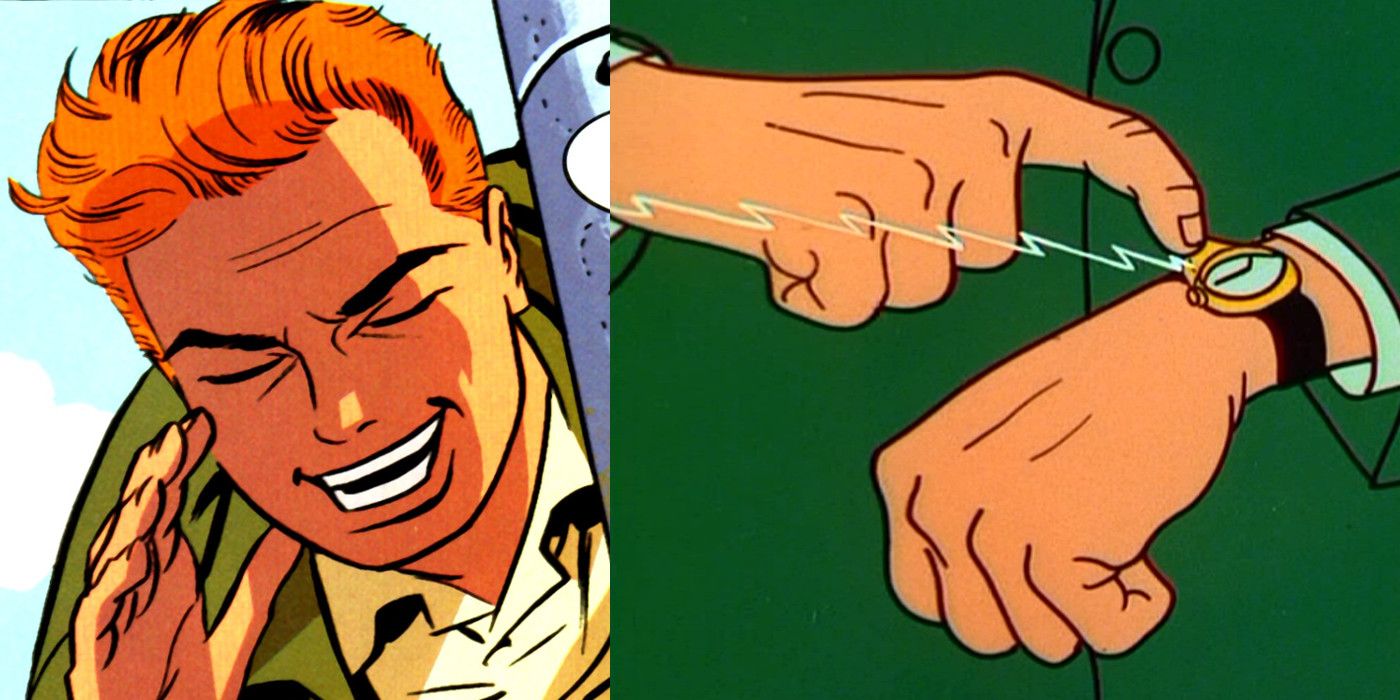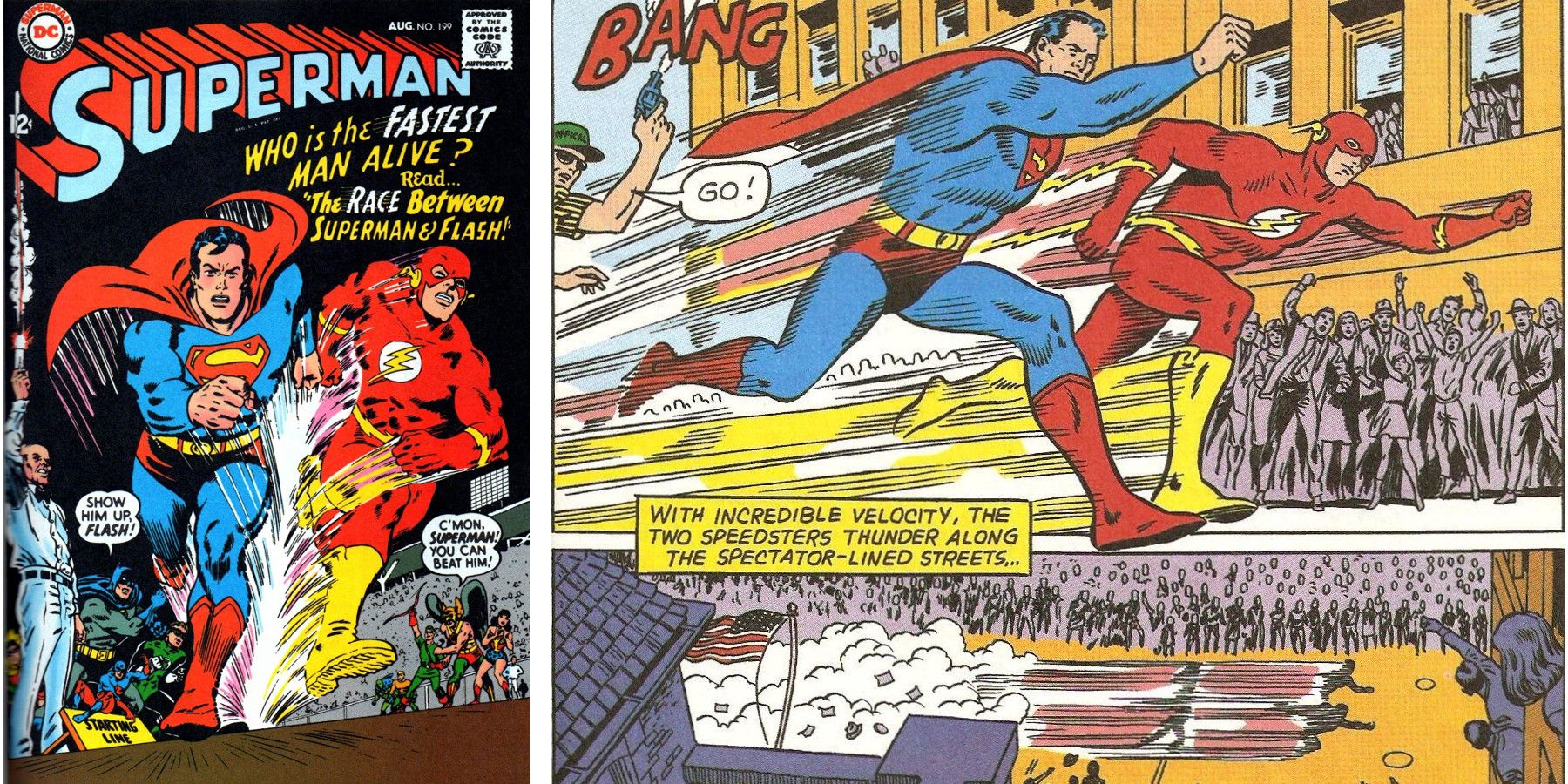Superman forever changed the course of the nascent medium of comic books in the 1930s, opening the parade of costumed adventurers up to a new concept: the super-powered hero. Soaring above the herd of mystery men, adventurers and two-fisted gumshoes -- even before he developed the ability to fly -- the Last Son of Krypton quickly became the flagship character of the future DC Comics, offering a populist appeal as a crusader for the powerless, both in costume and as reporter Clark Kent.
RELATED: Batman: The 15 Most Important First Appearances In The Bat-Mythos
Of course, the Superman mythology did not come fully formed. Many elements of the character, his supporting characters, his powers and his environment were added over time, elaborated upon over multiple stories, explained through several retcons and, in some cases -- like his career as Superboy -- changed entirely via a reboot... or three. Here is a look at 16 of the most important firsts in Superman's life and career.
16 FIRST APPEARANCE
Superman was created by writer Jerry Siegel and artist Joe Shuster, two teenagers from Toronto who had moved to Cleveland and brainstormed a concept for a new kind of hero for a newspaper comic strip. But each syndicate they approached rejected their concept. On the suggestion of McClure Newspaper Syndicate representative Max Gaines -- who would later found EC Comics -- Siegel and Shuster sold their idea to Detective Comics for $130.
Superman was the cover feature on "Action Comics" #1 (June 1938), and soon headlined a solo title, "Superman," a year later ("Superman" #1, Summer 1939). In short order, the character appeared in a daily newspaper comic strip in 1939, a color Sunday strip later that year, a radio show in 1940, animated cartoons in 1941, a movie serial in 1948 and the first theatrical film in 1951, which was spun off into the television series "Adventures of Superman" from 1952 to 1958.
15 THE DAILY PLANET
Superman's alter ego, Clark Kent, is inextricably identified with being a newspaper reporter, but the newspaper he is most associated with, the Daily Planet, did not debut with him in "Action Comics" #1 (June 1938). Instead, Kent toils for the Daily Star, which was inspired by the major daily newspaper in Superman co-creator Joe Shuster's hometown, Toronto. The name "Daily Planet" does not appear until "Action Comics" #23 (April 1940), without any in-story explanation.
Likewise, Kent's first boss was not Perry White, but George Taylor, who was first named in "Superman" #2 (Fall 1939) and continues at the paper after the transition from Planet to Star. Perry White first appears as Planet editor in "Superman" #7 (December 1940), although his full name is not provided until "Superman" #10 (May-June 1941). After the advent of the Multiverse, the early Superman stories featuring Kent working at the Daily Star were assigned to Earth-Two.
14 KRYPTON
The planet Krypton, Superman's original home and the source of his heritage, looms large in the chronicles, but it got only a minor, one-panel reference in Superman's first story, in "Action Comics" #1 (June 1938): "As a distant planet was destroyed by old age, a scientist placed his infant son within a hastily devised space-ship, launching it toward Earth!" The planet gained its name in "Superman" #1 (Summer 1939).
The earliest stories indicated that people from Krypton were physically superior to people from Earth. That changed to Kryptonians being physically little different than Terrans, save for adapting to their planet's higher gravity, and instead gaining superpowers when under a yellow sun. Krypton did have a more technically advanced society, with a government led by scientists, who, unfortunately, were unwilling to listen to the warning of the planet's impending doom from Jor-El. Superman did not learn of his Kryptonian heritage until "Action Comics" #161 (October 1951), which included another key part of the mythos...
13 GREEN KRYPTONITE
In "Superman" #61 (November-December 1949), written by Bill Finger and drawn by Al Plastino, Superman follows Lois Lane as she investigates a con man known as Swami Riva. Both men are surprised when Riva puts a hex on Superman and it works; Superman weakens and Riva knocks him out with one punch. Superman investigates Riva and seeks the source of the gem in his turban, and learns it is from a meteorite. Flying into space faster than light, Superman follows the course of the meteorites to their origin in the past -- Krypton, before it exploded.
Superman sees his own origin unfold: He follows his father Jor-El to his home just before baby Kal-El is placed in the rocket that sends him to Earth and Jor-El and Lara say their goodbyes as Krypton explodes. He then follows the rocket to Earth and sees it found by Jonathan and Martha Kent. Witnessing these sights makes him realize for the first time that he is not of Earth. Discerning that the meteorites from Krypton emit rays that affect him, Superman goes back to Metropolis and takes care of Riva. In that story, kryptonite was red; the standard variety was first colored green in "Action Comics" #161 (August 1961).
12 RED KRYPTONITE
Where the radiations from green kryptonite are ultimately fatal to Kryptonians, the effects of red kryptonite are not typically fatal -- but they are often embarrassing. Red kryptonite first appeared in "Adventure Comics" #252 (September 1958), when a chunk falls in front of Superboy. His analysis of the stone tells him it has "ten times the radiation power of ordinary kryptonite!" In "Adventure Comics" #255 (December 1958), a Martian uses a red-kryptonite projector on Superboy that manifests Clark Kent as a separate, nasty person, in a story written by Alvin Schwartz and drawn by John Sikela.
"Adventure Comics" #268 (January 1960) explained the source of red kryptonite, in a story written by Otto Binder and drawn by Al Plastino: that a cluster of green kryptonite meteors went through a "cosmic cloud" and came out red. The red ones have unpredictable, one-time effects on Kryptonians, bringing on mood swings, memory loss and bizarre physical transformations. Fortunately, their effects end after a limited time of up to 72 hours.
11 FIRST FLIGHT
In the earliest Superman stories, he was unable to fly, but being super-strong, he could make prodigious leaps. His debut story in "Action Comics" #1 (June 1938) claimed Superman could "leap 1/8th of a mile" and "hurdle a twenty-story building." Subsequent stories rendered the leaping in a manner that resembled flying.
Superman first flew in the comics as an artist's mistake in "Superman" #10 (May-June 1941), when Leo Nowak drew him hovering in the air and changing direction; however, Superman was back to leaping in subsequent stories. That same year, Superman appeared in animated film shorts from the Fleischer Studios that had Superman flying, but the films weren't tied to the comics continuity, which didn't immediately adopt the change. Superman was described as a "being who can fly like a bird" in "Action Comics" #60 (May 1943), but did not fully have the power of flight until "Action Comics" #65 (October 1943).
10 TRAVELED THROUGH TIME
Superman's ability to fly developed over multiple stories, as did his speed. The earliest tales posited that all Kryptonians possessed superpowers on their native planet. Within a few years, that gave way to the approach that being in the Earth environment gave Superman his powers, both because Earth was smaller than Krypton and had lesser gravity, and because of "ultra solar rays" from Earth's yellow sun.
In "Action Comics" #7 ((December 1938), Superman can run as fast as a bullet; several stories thereafter describe him as running so fast as to be a blur. By "Superman" #35 (July-August 1945), he can reach 186,000 miles per second -- the speed of light -- and dash from Metropolis to Burma "in the wink of an eye!" With such speed, Superman breaches the "time-dimension" for the first time in the story "Autograph, Please!" in "Superman" #48 (October-November 1947), written by Jerry Siegel and drawn by John Sikela.
9 FLEW INTO SPACE
The increase in Superman's speed allowed him to have adventures away from Metropolis and around the world, but things went to a higher level when he left the Earth entirely. Superman's speed developed and increased over multiple stories, as did his invulnerability. In the first Superman story in "Action Comics" #1 (June 1938), readers are told "nothing less than a bursting shell could penetrate his skin!" Subsequent stories showed Superman withstanding explosions,
Superman travels to space in a rocket in "Superman" #18 (September-October 1942), written by Jerry Siegel and drawn by Leo Nowak. In "Superman" #34 (May 1945), Superman flies up to a spaceship to investigate a mysterious meteor in a story by Bill Finger and drawn by Pete Riss and inked by Stan Kaye. In "Action Comics" # 111 (August 1947), Superman travels faster than the speed of light to photograph light rays to capture images of past events, in a story written by Jerry Siegel and drawn by John Sikela.
8 FIRST IMAGINARY STORY
The "Imaginary Story" was a way for Superman comics creators to liven up the strip with tales that, if presented as canon, would upend the status quo. There have been several tales that speculated on alternate histories, such as in "Superman" #132 (October 1959), in which Superman uses a computer in the Fortress of Solitude to speculate how his life might have been had Krypton not exploded.
The first cover billed as an "Imaginary Story" certainly would have upended things: "Mr. and Mrs. Clark (Superman) Kent" in "Superman's Girl Friend Lois Lane" #19 (August 1960), written by Jerry Siegel and drawn by Kurt Schaffenberger. Superman stops dithering, reveals his identity to Lois and proposes. Unfortunately for her, he marries her as Clark Kent, and she struggles to keep the secret. Lois has to sacrifice one of Superman's gifts, and picks a fight with him after a glamorous actress kisses him at a public event. Some call "Superman, Matinee Idol" in "Superman" #19 (November-December 1942) an Imaginary Story, but it wasn't marked as such when first published; it was so dubbed after it was reprinted and retitled "Superman, Cartoon Hero!"
7 SUPERBOY
After the introduction of Robin in "Detective Comics" #38 (April 1940), kid sidekicks and junior partners became a popular component of superhero tales, giving young readers relatable figures that shared the adventures of the big-name leads. The Superman titles took a different twist on the notion; instead of creating a young associate for Superman, readers got new stories of Superman himself being a costumed hero when he was a child.
"Superboy" debuted as a feature in "More Fun Comics" #101 (January/February 1945), in a story credited to Jerry Siegel and drawn by Joe Shuster. Up to then, Superman had not been shown to have had any heroic adventures before reaching adulthood, making the introduction of Superboy an early example of a reboot. The Superboy feature later was switched to "Adventure Comics" with issue #103 (April 1946) proving popular enough that the character got to headline his own title, "Superboy," which debuted with issue #1 in March-April 1949.
6 KRYPTO
Superboy gained a canine companion in "Adventure Comics" #210 (March 1955), in a story written by Otto Binder, penciled by Curt Swan and inked by Sy Barry. Krypto's introduction was a retcon to the Superman story; readers were told that when he was a puppy, he was baby Kal-El's pet on Krypton. Superman's father, Jor-El, struggled to develop a way to save the populace from the looming destruction of the planet and hit on the idea of space rockets. However, the Krypton ruling council refused to hear anything about the planet exploding and forbade building the fleet.
Jor-El then turned to saving his family, and built a prototype rocket. He tested it by putting Krypto aboard, planning for the craft to orbit the planet a few times and land. Unfortunately, the rocket was knocked off-course by a meteor and went into deep space. Krypto's rocket made it to Earth years later, after Kal-El reached his teens. Like Superman, Krypto developed superpowers in the Earth environment.
5 THE FORTRESS OF SOLITUDE
Although he spends most of his private time at Clark Kent's home in Metropolis, Superman maintains a second, grander residence in a remote location far from the city -- the Fortress of Solitude. Its forerunner was the "Secret Citadel" in the mountains outside Metropolis, first appearing in "Superman" #17 (July-August 1942), written by Jerry Siegel and drawn by John Sikela. The Secret Citadel bore a not-so-secret "S" shield above the door and was full of exercise equipment fit to challenge a Man of Steel.
RELATED: Fortress Of Solitude: 16 Secrets About Superman’s Crystal Crib
"Superman" #58 (May-June 1949) was the first time Superman called his retreat the "Fortress of Solitude," as well as the first time it was shown to be in the Arctic, placed there "because the intense cold keeps away snoopers." The classic Fortress surfaced in "Action Comics" #241 (June 1958), in a story written by Jerry Coleman, drawn by Wayne Boring and inked by Stan Kaye. This Fortress has the giant key made to resemble an airline path marker, collections of trophies from various worlds and rooms dedicated to honoring his friends.
4 KANDOR
Kandor was the capital of Krypton and one of its largest cities. Its entire population was kidnapped by the space pirate Brainiac, who used a ray to shrink the land and buildings small enough to be placed within a glass bottle that was connected to an air supply and life support. Superman discovered Kandor during his first encounter with Brainiac in "Action Comics" #242 (July 1958), written by Otto Binder and drawn by Al Plastino.
In that story, Brainiac came to Earth and miniaturized Paris, Rome, Metropolis and other cities. After Superman defeated Brainiac and restored the other cities to full size -- but was unable to do so for Kandor -- he took possession of the bottle and kept it in the Fortress of Solitude. Superman made many efforts over the years to find a way to enlarge Kandor and locate a suitable place for it, which didn't happen until "Superman" #338 (August 1979), in a story written by Len Wein, penciled by Curt Swan and inked by Frank Chiarmonte.
3 THE PHANTOM ZONE
The otherworldly limbo-like dimension known as the Phantom Zone first appeared in "Adventure Comics" #283 (April 1961), in a story written by Robert Bernstein and drawn by George Papp. A crate full of Kryptonian artifacts falls to Earth in New Mexico and is found by Lana Lang's father while on an archaelogical dig. He delivers the crate to Superboy, who opens and tests the contents, which include the Phantom Zone projector, the device that sends people into the Zone. There is also a "thought helmet" that explains to Superboy all about the Zone, showing him how criminals are sent there to serve their sentences -- including General Zod, who would become one of Superman's fiercest adversaries.
Being in the Phantom Zone spared the lives of the Kryptonian inmates, and after Superboy acquired the Zone projector, criminals were released into Kandor once their sentences were completed. Superboy sent Mon-El into the Zone in "Superboy" #89 (February 1961) to save his life after he was weakened by lead poisoning, and pledged to find a cure. Mon-El wound up staying in the Zone for more than a thousand years, ultimately joining the Legion of Super-Heroes.
2 THE SIGNAL WATCH
Superman's pal, Jimmy Olsen, was a minor presence in the early Superman tales, first appearing in a cameo in "Action Comics" #6 (November 1938). But he became a bigger part of the Superman story after the "Adventures of Superman" TV series debuted in 1952, and headlined his own title, "Superman's Pal Jimmy Olsen," beginning in September-October 1954. Jimmy had a tendency to get into dangerous and bizarre situations, which he could sometimes find a way out of -- and sometimes could not. When he couldn't, he could summon Superman with a watch that emits an electronic signal at a high pitch that only Superman can hear.
Olsen first used the watch in issue #1 of his series, in a story written by Otto Binder, penciled by Curt Swan and inked by Ray Burnley. The original watch was an ordinary analog model, to which Superman added an antenna and an ultrasonic frequency generator. Superman would upgrade the watch from time to time, as it had various limitations. Its signal could not reach space, could not penetrate lead and was susceptible to electrical interference.
1 FIRST RACE AGAINST THE FLASH
The question has tantalized readers for ages: Who is faster: Superman or The Flash? Readers first saw the two pitted against each other in "Superman" #199 (1967), written by Jim Shooter, penciled by Curt Swan and inked by George Klein. Superman and The Flash are summoned to the United Nations headquarters, where the secretary-general asks them to participate in a race that will raise funds for underdeveloped countries. "A world-wide sweepstakes, based on a race between you two, could solve our problem," the secretary-general says. The two heroes agree.
The race will take the two around the world three times, with obstacles along the way to keep it interesting. Superman was barred from flying, but swam through oceans where the Flash ran atop the waves. Unfortunately, rival groups of mobsters placed large bets on the race, and captured both heroes -- the Flash by putting a glass panel in his way, knocking him unconscious when he crashed through it, and Superman with a green kryptonite gas -- and put in ringers who were ordered to lose the race. After they are freed, Superman and the Flash continue the race, deliberately ending in a tie to thwart the mobsters.
What was your favorite first appearance in Superman's life? Let us know in the comments!

